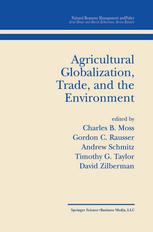

Most ebook files are in PDF format, so you can easily read them using various software such as Foxit Reader or directly on the Google Chrome browser.
Some ebook files are released by publishers in other formats such as .awz, .mobi, .epub, .fb2, etc. You may need to install specific software to read these formats on mobile/PC, such as Calibre.
Please read the tutorial at this link: https://ebookbell.com/faq
We offer FREE conversion to the popular formats you request; however, this may take some time. Therefore, right after payment, please email us, and we will try to provide the service as quickly as possible.
For some exceptional file formats or broken links (if any), please refrain from opening any disputes. Instead, email us first, and we will try to assist within a maximum of 6 hours.
EbookBell Team

4.7
36 reviewsThe relative prosperity in U.S. agriculture that attended the passage of the Federal Agriculture Improvement and Reform Act of 1996 was followed by a general decline in U.S. agricultural prices from 1998 to 2000. This trend in declining prices continues through the year 2001, despite the movement toward more liberalized agricultural trade. Trade liberalization has been the result of a variety of factors, including the implementation of the Uruguay Round Agreement, and the establishment of a variety of regional trade agreements, such as the North America Free Trade Agreement. Needless to say, in the face of falling agricultural prices and increasingly liberalized ag ricultural trade, the agricultural policy scene is an extremely complex one, both locally and globally. The chapters in this volume look to understand this complexity by ad dressing the interaction between trade, the economic well-being of the farm sector, and the possibilities for future policy reform. The chapters collected here explore a number of different issues, including the operation of the tar iff-rate quotas established under the Uruguay Round Agreement, the impli cations of sanitary and phytosanitary restrictions on trade, and the growing controversy over genetically modified organisms. In addition, several chap ters analyze the interaction between agricultural trade and environmental concerns.